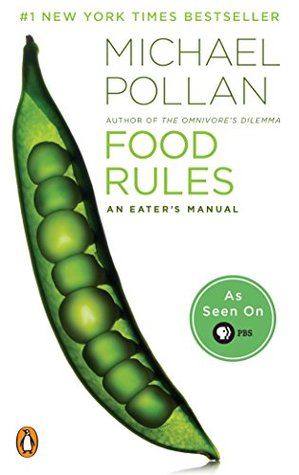More on this book
Community
Kindle Notes & Highlights
Eat animals that have themselves eaten well.
If you have the space, buy a freezer.
freezer will also enable you to put up food from the farmers’ market, and encourage you to buy produce in bulk at the height of its season, when it will be most abundant—and therefore cheapest. And freezing does not significantly diminish the nutritional value of produce.
Eat like an omnivore.
The greater the diversity of species you eat, the more likely you are to cover all your nutritional bases.
Eat well-grown food from healthy soil.
It would have been easier to say “eat organic,” and it is true that food certified organic is usually well grown in relatively healthy soil—soil nourished by organic matter rather than chemical fertilizers. (It also will contain little or no residue from synthetic pesticides or pharmaceuticals.)
(And just because a food is labeled organic does not mean it’s good for you: Organic soda is still soda—a large quantity of utterly empty calories.)
soils rich in organic matter produce more nutritious food: that is, food with higher levels of antioxidants, flavonoids, vitamins, and minerals. Of course, after a few days riding cross-country in a truck, the nutritional quality of any kind of produce will deteriorate, so ideally you want to eat food that is both organic and local.
Eat wild foods when you can.
The fields and forests are crowded with plants containing higher levels of various phytochemicals than their domesticated cousins. Why? Because these plants have to defend themselves against pests and diseases without any help from us, and because historically we’ve tended to select and breed crop plants for sweetness; many of the defensive compounds plants produce are bitter. We also breed for shelf life, and so
Don’t overlook the oily little fishes.
Avoid big fish at the top of the marine food chain—tuna, swordfish, shark—because they’re endangered, and because they often contain high levels of mercury. Fortunately, a few of the most nutritious wild fish species, including mackerel, sardines, and anchovies, are well managed, and in some cases are even abundant. Those oily little fish are particularly good choices. According to a Dutch proverb, “A land with lots of herring can get along with few doctors.”
Eat some foods that have been predigested by bacteria or fungi.
Sweeten and salt your food yourself.
Eat sweet foods as you find them in nature.
Don’t eat breakfast cereals that change the color of the milk.
“The whiter the bread, the sooner you’ll be dead.”
Favor the kinds of oils and grains that have traditionally been stone-ground.
Eat all the junk food you want as long as you cook it yourself.
Be the kind of person who takes supplements—then skip the supplements.
Eat more like the French. Or the Japanese. Or the Italians. Or the Greeks.
People who eat according to the rules of a traditional food culture are generally healthier than those of us eating a modern Western diet of processed foods.
Regard nontraditional foods with skepticism.
when it comes to food, it pays to approach new creations with caution.
Have a glass of wine with dinner.
There is now considerable scientific evidence for the health benefits of alcohol to go with a few centuries of traditional belief and anecdotal evidence.
people who drink moderately and regularly live longer and suffer considerably less heart disease than teetotalers.
(Not too much.)
How you eat may have as much bearing on your health (and your weight) as what you eat.
This may well be the deeper lesson of the so-called French paradox: the mystery (at least to nutritionists) of a population that eats all sorts of supposedly lethal fatty foods, and washes them down with red wine, but which is nevertheless healthier, slimmer, and slightly longer lived than we are.
French is a people with a completely different relationship to food than we have. They seldom snack, eat small portions from small plates, don’t go back for second helpings, and eat most of their food ...
This highlight has been truncated due to consecutive passage length restrictions.
The American food system has for many years devoted its energies to increasing quantity and reducing price rather than to improving quality.
Americans spend less than 10 percent of their income on food, less than the citizens of any other nation.
It can take twenty minutes before your brain gets the word that your belly is full; that means that if you take less than twenty minutes to finish a meal, the sensation of satiety will arrive too late to be of any use. So


